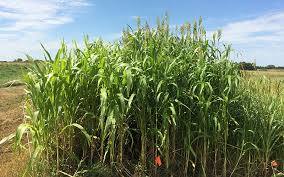Cropping Pattern – Agriculture Optional Notes – For W.B.C.S. Mains Examination.
The Indian agriculture is decided by the soil types and climatic parameters which determine overall agro-ecological setting for nourishment and appropriateness of a crop or set of crops for cultivation.Continue Reading Cropping Pattern – Agriculture Optional Notes – For W.B.C.S. Mains Examination.
There are three distinct crop seasons in India, namely Kharif, Rabi and Zaid. The Kharif season started with Southwest Monsoon under which the cultivation of tropical crops such as rice, cotton, jute, jowar, bajra and tur are cultivated. The Rabi season starts with the onset of winter in October-November and ends in March-April. Zaid is a short duration summer cropping season beginning after harvesting of Rabi crops. There are four cropping systems in India which is discussed below:
1. Rainy Season Cropping Systems: In this system of cropping, Rice, Sorghum, Pearl Millet (Bajra), Maize, Groundnut and Cotton are grown.
2. Winter Cropping Systems: In this system, wheat, barley and oats, sorghum and chickpea are grown.
3. Plantation and other commercial crops: Sugarcane, Tobacco, Potato, Jute, Tea, Coffee, Coconut, Rubber, Spices and condiments are important crops are grown in this system.
4. Mixed Cropping: In this system, pulses and some oilseeds are grown with maize, sorghum and pearl millet.
Do you know the reason of daily variation of temperature
Types of Cropping System in India
There are three types of cropping system followed in India which is below:
1. Mono-Cropping or Monoculture: In this system, only one crop is grown on farm land year after year.
2. Multiple-Cropping: In this system, farmers grow two or more crops on farm land in one calendar year with intensive input management practices. It includes inter-cropping, mixed-cropping and sequence cropping.
3. Inter-cropping: In this system, farmers grow two or more crops simultaneously on the same field in one calendar year.
The Indian agricultural practices are still lacking by intensive planning because India has diversified agro-climatic zone, which is unfortunately not giving sufficient production. If our farming system relied on modern cropping pattern and cropping system, then we have a predominance of food grain crops, our farming will also inclined towards commercial crops and most importantly it will noticeable increase in the production of individual crops.
Cropping pattern in India
Cropping pattern is a dynamic concept because it changes over space and time. It can be defined as the proportion of area under various crops at a point of time. In other words, it is a yearly sequence and spatial arrangement of sowing and fallow on a given area. In India, the cropping pattern determined by rainfall, climate, temperature, soil type and technology.
Please subscribe here to get all future updates on this post/page/category/website


 Toll Free 1800 572 9282
Toll Free 1800 572 9282  mailus@wbcsmadeeasy.in
mailus@wbcsmadeeasy.in



















































































































